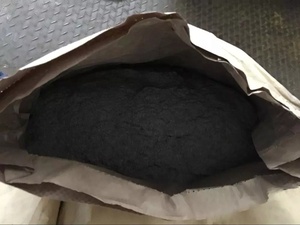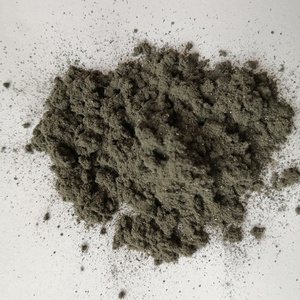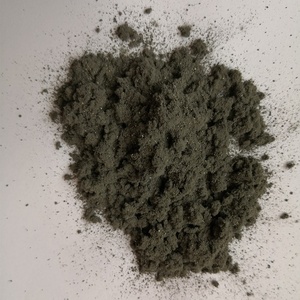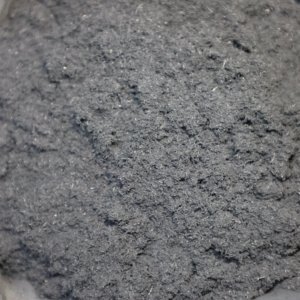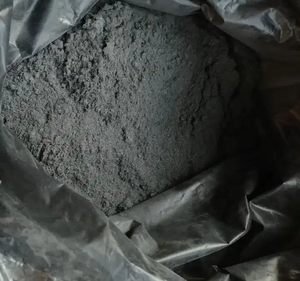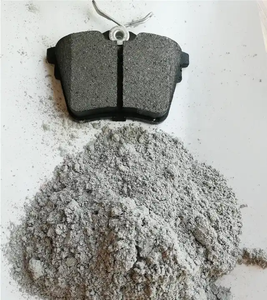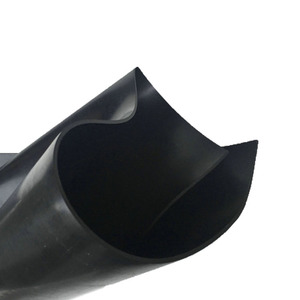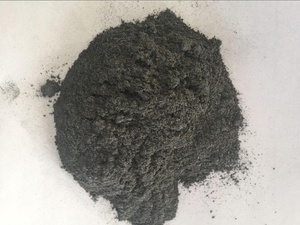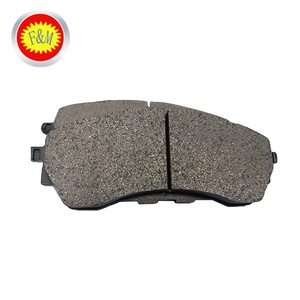Types of Brake Pad Raw Materials
Brake pads are critical safety components made from various materials, each with unique properties that affect performance, durability, and suitability for different vehicles and driving conditions. Understanding these materials helps in making informed choices for safety and value.
Historically widely used due to exceptional heat resistance. However, asbestos has been linked to serious health hazards including lung cancer and respiratory diseases, leading to its prohibition in many countries. While excellent for heat insulation and formerly used in electrical components and textiles, modern regulations have eliminated asbestos from most automotive applications.
Constructed from steel, copper, iron, or brass fibers. These pads offer outstanding durability and exceptional braking performance even in extreme conditions. While they excel in performance vehicles, they tend to accelerate brake disc wear and produce more noise, making them less ideal for heavy-duty trucks. Found predominantly in modern high-performance applications.
Composed of non-metallic fibers including rubber, carbon, and Kevlar. These pads provide quiet operation with a smooth braking feel while being gentle on brake discs. With a lower coefficient of friction, they're perfectly suited for light-duty vehicles but lack the stopping power needed for heavy-duty applications or vehicles that transport substantial loads.
A balanced blend of metallic fibers and organic materials, offering superior wear resistance and consistent braking performance. Their versatility makes them suitable for both light and heavy-duty vehicles. These have become the most popular option in the market due to their excellent performance-to-value ratio and adaptability across various driving conditions.
Premium pads manufactured from fine copper fibers embedded in ceramic materials. They deliver quiet operation, produce minimal dust, and provide excellent braking performance. Although they come at a higher price point compared to other options, ceramic pads are the preferred choice for high-performance vehicles where superior braking capability and cleanliness are priorities.
| Material Type | Performance | Noise Level | Dust Production | Rotor Wear | Ideal Application |
|---|---|---|---|---|---|
| Asbestos | Moderate | Moderate | High | Moderate | Obsolete/Prohibited |
| Metallic | Excellent | High | Moderate | High | Performance vehicles |
| Organic | Moderate | Low | Low | Low | Passenger vehicles |
| Semi-Metallic | Good | Moderate | Moderate | Moderate | Versatile/All-purpose |
| Ceramic | Excellent | Very Low | Very Low | Low | Luxury/High-performance |
Expert Tip: When evaluating brake pad materials, consider not just immediate performance needs but also your vehicle's value and your driving habits. Ceramic pads, while more expensive initially, can be more economical long-term for luxury vehicles due to reduced rotor wear and cleaning costs.
Specifications and Maintenance of Brake Pad Raw Materials
Material Specifications
Each brake pad material has unique specifications that determine its performance characteristics and suitability for different vehicles and driving conditions:
Organic (NAO) Pads
- Composition: Natural fibers, resins, fillers
- Operating Temperature: Up to 380°F (193°C)
- Coefficient of Friction: 0.30-0.35
- Lifespan: 20,000-70,000 miles
- Best for: Everyday driving, passenger vehicles
Metallic Pads
- Composition: Steel fibers, brass, iron (30-65% metal)
- Operating Temperature: Up to 750°F (399°C)
- Coefficient of Friction: 0.35-0.40
- Lifespan: 30,000-80,000 miles
- Best for: Performance driving, sports cars
Ceramic Pads
- Composition: Ceramic fibers, copper fibers, bonding agents
- Operating Temperature: Up to 1,500°F (816°C)
- Coefficient of Friction: 0.30-0.38
- Lifespan: 40,000-90,000 miles
- Best for: Luxury vehicles, performance with comfort
Semi-Metallic Pads
- Composition: Metal fibers (30-65%) plus organic materials
- Operating Temperature: Up to 650°F (343°C)
- Coefficient of Friction: 0.35-0.45
- Lifespan: 35,000-75,000 miles
- Best for: Heavy-duty vehicles, versatile use
Brake Pad Maintenance Guidelines
Proper maintenance extends brake pad life while ensuring optimal safety and performance. Follow these essential maintenance practices:
| Maintenance Task | Frequency | Importance | Details |
|---|---|---|---|
| Visual Inspection | Every 5,000-7,000 miles | Critical | Check for wear indicators, uneven wear patterns, cracks, and minimum thickness (should be at least 3-4mm) |
| Rotor Inspection | With pad inspection | High | Examine for warping, cracks, deep grooves, and blue discoloration (indicating overheating) |
| Caliper Maintenance | Every 15,000 miles | Medium | Check for proper operation, clean and lubricate sliding components |
| Brake Fluid Change | Every 2 years or 30,000 miles | High | Replace with manufacturer-recommended fluid type to prevent contamination |
| Brake System Cleaning | As needed/Annually | Medium | Remove dust and debris from brake components to prevent accelerated wear |
Professional Insight: Brake pad material selection should consider your complete driving profile. For mixed driving conditions, semi-metallic pads often provide the best balance of performance, wear characteristics, and value. If you frequently drive in stop-and-go traffic or hilly areas, consider upgrading to a higher temperature tolerance material.
Important Safety Warning: Never delay brake pad replacement when wear indicators are visible or pads are thinner than 3mm. Continuing to drive with worn pads can damage rotors, calipers, and compromise braking efficiency, potentially leading to brake failure.
How to Choose Brake Pad Raw Material
Selecting the right brake pad material requires careful consideration of vehicle specifications, driving habits, and performance requirements. This comprehensive guide helps you make an informed decision when sourcing brake pads for resale or personal use.
Vehicle Type Considerations
Different vehicles demand specific brake pad characteristics based on weight, size, and purpose:
- Passenger cars: Organic or ceramic pads for quiet operation and comfort
- SUVs/Crossovers: Semi-metallic pads for balanced performance
- Performance vehicles: Metallic or high-grade ceramic for superior stopping power
- Heavy-duty trucks: Heavy-duty semi-metallic with high friction coefficient
- Electric vehicles: Low-dust ceramic pads with regenerative braking compatibility
Performance Requirements
Match brake pad materials to the expected performance profile:
- Daily commuting: Organic or ceramic for smooth, quiet braking
- Sporty driving: Metallic or performance ceramic for responsive braking
- Heavy loads/towing: Heavy-duty semi-metallic for fade resistance
- Track/performance driving: Carbon composite or racing-specific formulations
- Off-road use: Durable metallic compounds with dirt/debris resistance
Environmental Considerations
Regional and climate factors significantly impact brake pad performance:
- Mountainous areas: High-temperature tolerant materials to prevent fade
- Cold climates: Formulations with good cold-weather performance
- Wet conditions: Materials with consistent wet-braking characteristics
- Urban environments: Low-dust ceramic pads for cleanliness
- Rural/dusty areas: Sealed designs to prevent contamination
Budget Considerations
Balance cost with quality for optimal value:
- Economy segment: Quality organic pads from reputable manufacturers
- Mid-range: Semi-metallic pads with good longevity
- Premium: Ceramic pads with extended warranty and superior performance
- Fleet/commercial: Bulk-purchase semi-metallic with proven durability
- Performance/luxury: High-end ceramic or specialized compounds
Key Selection Factors Comparison
| Selection Factor | Organic Pads | Semi-Metallic | Metallic | Ceramic |
|---|---|---|---|---|
| Initial Cost | Low | Medium | Medium-High | High |
| Longevity | 20-70K miles | 35-75K miles | 30-80K miles | 40-90K miles |
| Noise Level | Very Low | Medium | High | Very Low |
| Stopping Power | Good | Very Good | Excellent | Very Good |
| Rotor Wear | Low | Medium | High | Low |
| Heat Tolerance | Low | Medium-High | High | Very High |
| Brake Dust | Medium | High | Very High | Low |
| Installation Ease | High | Medium | Medium | High |
Reseller Tip: When stocking inventory, prioritize semi-metallic and ceramic pads which have the broadest appeal. Organize your catalog by vehicle type rather than brake pad material to help customers find the right product. Include clear comparison information to help customers understand the performance differences between materials.
How to DIY and Replace Brake Pad Raw Material
Replacing brake pads is a manageable DIY project that can save money while ensuring your vehicle maintains optimal braking performance. Follow this comprehensive step-by-step guide for a successful brake pad replacement.
Required Tools and Materials
- New brake pads (appropriate for your vehicle)
- Jack and jack stands rated for your vehicle's weight
- Lug wrench or socket set
- C-clamp or brake caliper piston tool
- Socket wrench set or brake caliper tool
- Brake cleaner spray
- High-temperature brake lubricant
- Wire brush for cleaning
- Disposable gloves
- Wheel chocks
- Torque wrench
Step-by-Step Replacement Process
Preparation
Park on a flat, level surface. Apply the parking brake and chock the wheels that will remain on the ground. Loosen (but don't remove) the lug nuts on the wheels you'll be working on while the vehicle is still on the ground.
Jack and Secure the Vehicle
Locate the proper jacking points (consult your owner's manual). Raise the vehicle with the jack, then secure it with jack stands. Never rely solely on a jack to support the vehicle during maintenance.
Remove the Wheel
Completely remove the lug nuts and carefully take off the wheel. Place lug nuts in a secure container to prevent loss. Set the wheel aside with the outside face down to protect the rim.
Locate and Examine the Brake Assembly
Identify the brake caliper, rotor, and existing brake pads. Visually inspect the components for excessive wear, damage, or leaking brake fluid that might indicate additional problems.
Remove the Caliper
Locate the caliper slider bolts (usually two bolts on the inside of the caliper). Remove these bolts and carefully pivot or lift the caliper away from the rotor. Support the caliper with wire or a bungee cord to prevent it from hanging by the brake line, which could cause damage.
Remove Old Brake Pads
Take out the old brake pads and hardware. Note their orientation and position for reference when installing the new pads. Inspect the brake rotor surface for scoring, warping, or other damage.
Compress the Caliper Piston
Use a C-clamp or caliper piston tool to carefully push the caliper piston back into its bore. This creates space for the new, thicker brake pads. Place the old pad against the piston to distribute pressure evenly during compression.
Install New Brake Pads
Clean and lubricate the caliper hardware with high-temperature brake lubricant. Install the new brake pads in the same orientation as the old ones. Ensure they fit properly and move freely in their mounting brackets.
Reinstall the Caliper
Carefully position the caliper over the new brake pads and reinstall the slider bolts. Tighten the bolts to the manufacturer's torque specifications using a torque wrench.
Reinstall the Wheel
Place the wheel back on the hub and hand-tighten the lug nuts in a star pattern. Lower the vehicle to the ground, then use a torque wrench to tighten the lug nuts to the manufacturer's specifications in a crosswise pattern.
Break in the New Pads
Before driving normally, "bed in" the new brake pads by performing a series of moderate stops from about 30 mph. This transfers a thin layer of pad material to the rotor surface for optimal braking performance.
Safety Warning: Always pump the brake pedal several times before driving to re-establish proper pedal feel and ensure the piston is correctly positioned. The first pump may feel soft or go to the floor - this is normal, but the pedal should firm up after several pumps.
DIY Pro Tip: When replacing brake pads, consider inspecting and replacing brake fluid if it hasn't been changed in the past two years. Brake fluid absorbs moisture over time, which can lead to reduced braking performance and component corrosion.
Frequently Asked Questions
Semi-metallic brake pads are the most commonly used in modern vehicles. They contain a mixture of steel fibers and other metals with organic compounds, providing a balance of durability, heat resistance, and braking performance. These pads work well in diverse driving conditions, making them the standard choice for many manufacturers and a popular aftermarket option.
Brake pad lifespan varies significantly depending on material composition, driving habits, and environmental conditions. On average:
- Organic pads: 20,000-70,000 miles
- Semi-metallic pads: 35,000-75,000 miles
- Metallic pads: 30,000-80,000 miles
- Ceramic pads: 40,000-90,000 miles
Aggressive driving, stop-and-go traffic, mountainous terrain, and heavier vehicles can significantly reduce these estimates. Regular inspection is recommended regardless of mileage.
OEM (Original Equipment Manufacturer) brake pads:
- Made by or for the vehicle manufacturer to their exact specifications
- Guaranteed fit and function for specific vehicle models
- Generally higher priced than aftermarket options
- Consistent with the original braking feel and performance
- Often available only through dealerships
Aftermarket brake pads:
- Manufactured by third-party companies not affiliated with vehicle manufacturers
- Available in various quality tiers from budget to premium performance
- Often less expensive than OEM equivalents
- May offer performance improvements over OEM (especially premium lines)
- Wider availability through auto parts stores and online retailers
Several indicators suggest brake pads need replacement:
- Squealing or screeching noise: Most modern brake pads have wear indicators that make a high-pitched noise when pads are worn down
- Grinding sound: Indicates metal-on-metal contact, meaning pads are completely worn out (requires immediate attention)
- Reduced braking performance: Longer stopping distances or brake pedal pulsation
- Visual inspection: Brake pads less than 3-4mm thick should be replaced
- Dashboard warning light: Some vehicles have electronic pad wear sensors
- Vibration when braking: May indicate uneven pad wear or warped rotors
Front and rear brake pads differ in several important ways:
| Characteristic | Front Brake Pads | Rear Brake Pads |
|---|---|---|
| Size and Thickness | Typically larger and thicker | Usually smaller and thinner |
| Braking Force | Handle 60-80% of braking force | Handle 20-40% of braking force |
| Wear Rate | Wear faster due to greater load | Wear more slowly |
| Material Composition | Often higher temperature tolerance | May contain softer compounds |
| Replacement Frequency | Typically 2-3 times during vehicle life | Typically 1-2 times during vehicle life |
Due to these differences, it's important to never install front pads on rear brakes or vice versa, as this can compromise braking performance and safety.



